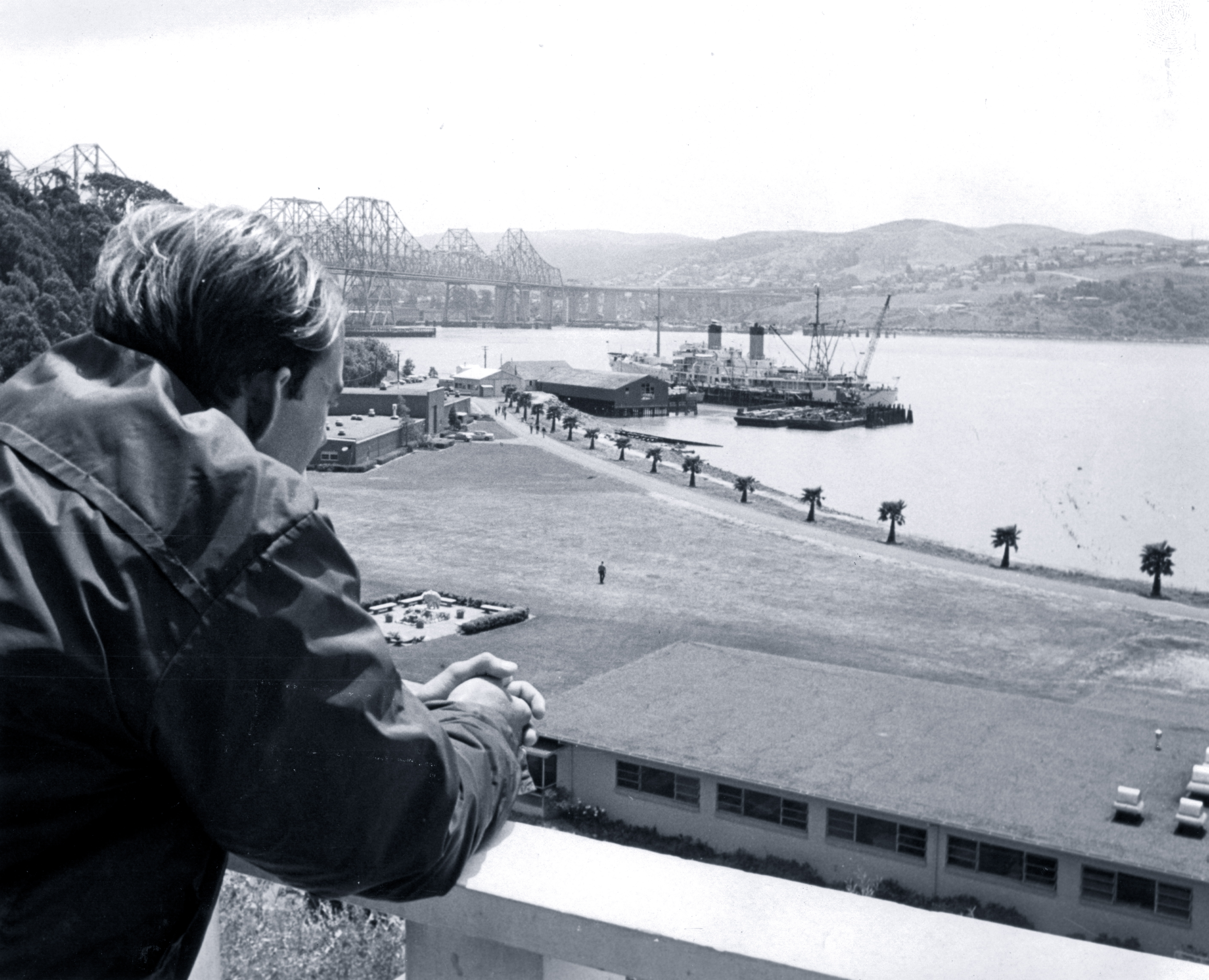history of the academy
Cal Maritime Through the Years:
A Brief Overview
Over the last 90 years, Cal Maritime has grown from a small nautical training school to a unique part of the California State University system. Our students, faculty, staff, and alumni have played an important role in the history of the state, the region, and the nation in times of war and peace.

Founded in 1929 as the “California Nautical School,” California State University Maritime Academy is in its ninth decade of service as a center for excellence in education and research in maritime trade and transportation.
This school was first located in Tiburon, on the Marin Peninsula north of San Francisco. In 1936, the U.S. Congress passed the Merchant Marine Act, which directed the creation and maintenance of an adequate merchant marine to support U.S. international and domestic commerce, and to meet the needs for national defense. Responding to this mandate, the federal government and the California state legislature began supporting the California Nautical School’s mission. In the early days, only three-year deck engineering programs were offered.
In 1939, the school changed its name to California Maritime Academy. In 1940, with war looming, the Academy was relocated to San Francisco. With the start of World War II, the course of study accelerated to 17 months, and many Academy graduates served in the war. In the midst of the war effort, a new permanent home for the academy was established in 1943 on a 67-acre site at Morrow Cove in Vallejo.
In 1973, California Maritime Academy became the first in the nation to enroll women in its licensed maritime program. In 1974, a four-year undergraduate program was established, laying the groundwork for accreditation by the Western Association of Schools and Colleges. Nautical Industrial Technology and Marine Engineering Technology were the four-year majors offered. In the late 1980s, majors in Mechanical Engineering and Business Administration were added, and the Nautical Industrial Technology program was replaced by Marine Transportation.
In 1995, Cal Maritime became a member campus of the California State University (CSU) system. In 1996, Cal Maritime introduced a Facilities Engineering Technology major. A new science and engineering lab building was completed in 1999. The curriculum further expanded in 2003, when the major in Global Studies and Maritime Affairs was introduced. In 2023, GSMA transitioned to International Strategy and Security, and together with International Business and Logistics these two major programs are part of the School of Letters and Sciences. In the fall of 2020, Cal Maritime launched its new Oceanography degree program, capitalizing on the Academy’s location and emphasis on experiential learning.
In 2003, the Academy dedicated its new Technology Laboratory and Classroom Building. Cal Maritime added its first graduate degree program in 2011, expanding the University’s commitment to the development of industry leadership through advanced instruction building on its existing programs.
The University has continued to expand its resources and enjoy growing support from the private sector to meet new challenges. McAllister Hall, a residence hall named for Robert McAllister (D’42)—the largest individual, private donor to the institution—opened in 2009. The Academy also opened a new state-of-the-art Marine Simulation Center, already one of the world’s most advanced facilities for maritime teaching, training, and research.
In recent years, the University has constructed a new waterfront Dining Hall and Physical Education and Aquatics Center, featuring new gymnasiums, training rooms, and a maritime survival training center. Renovations to Mayo Hall, the oldest building on campus, were recently completed to focus on cadet needs and meet campus goals for sustainability.
Strategic planning efforts have identified potential areas of continued growth in response to industry demand for skilled and well-trained graduates with a sense of purpose and global perspective, while maintaining points of differentiation that make us unique and sustaining the Academy’s relevance to the maritime and related industries.
The future looks strong and bright with continued support from alumni, industry, and friends.